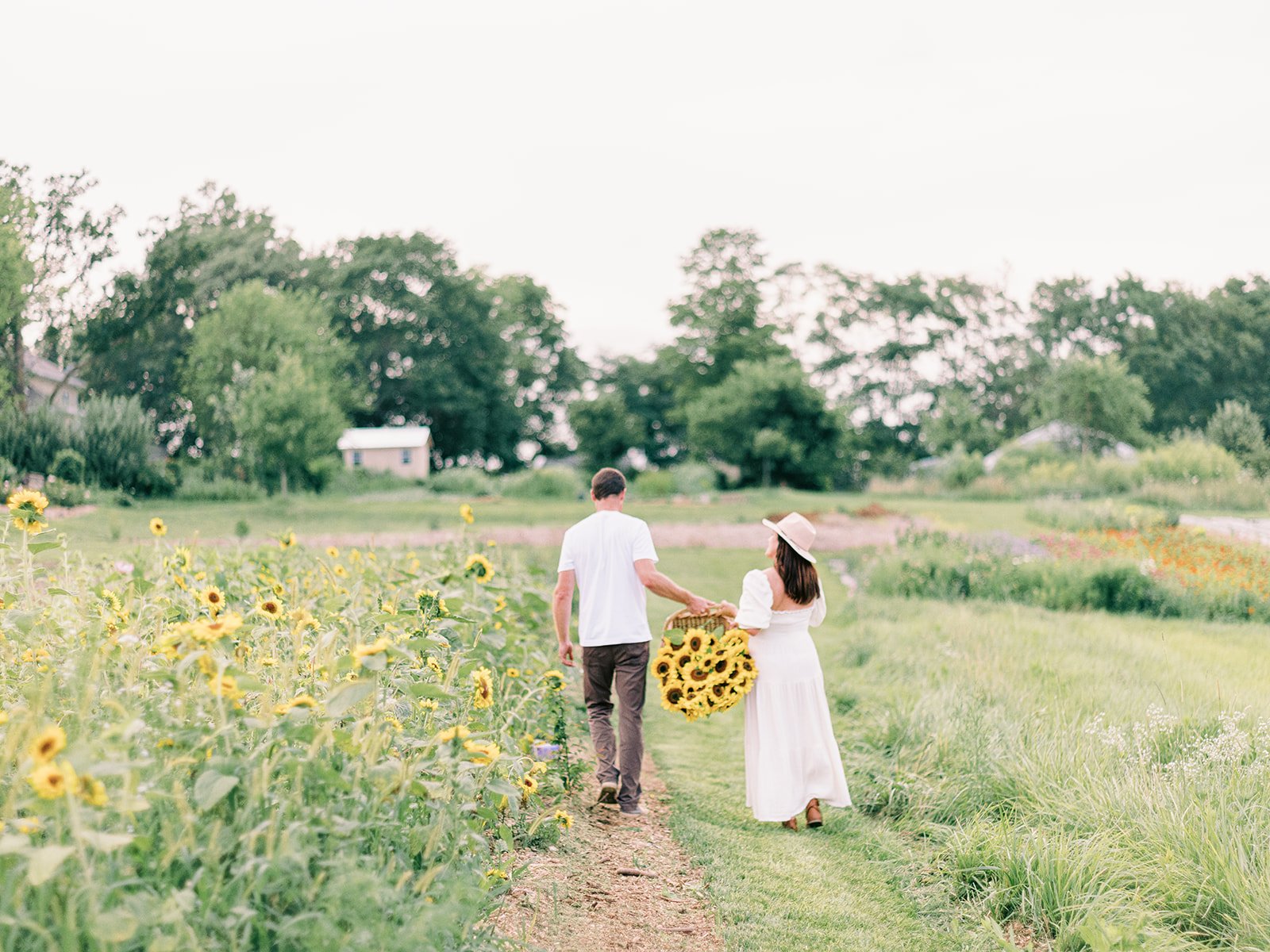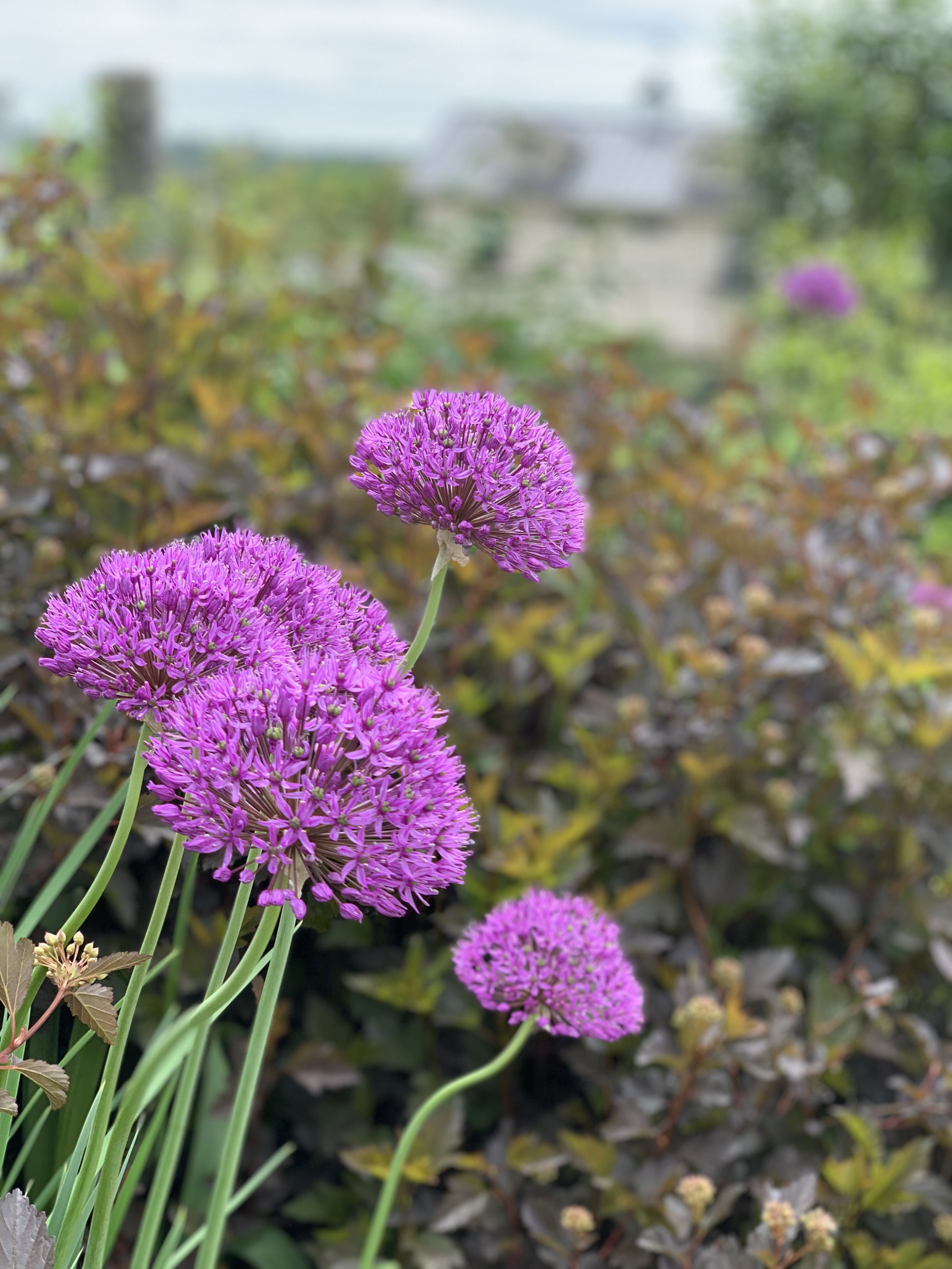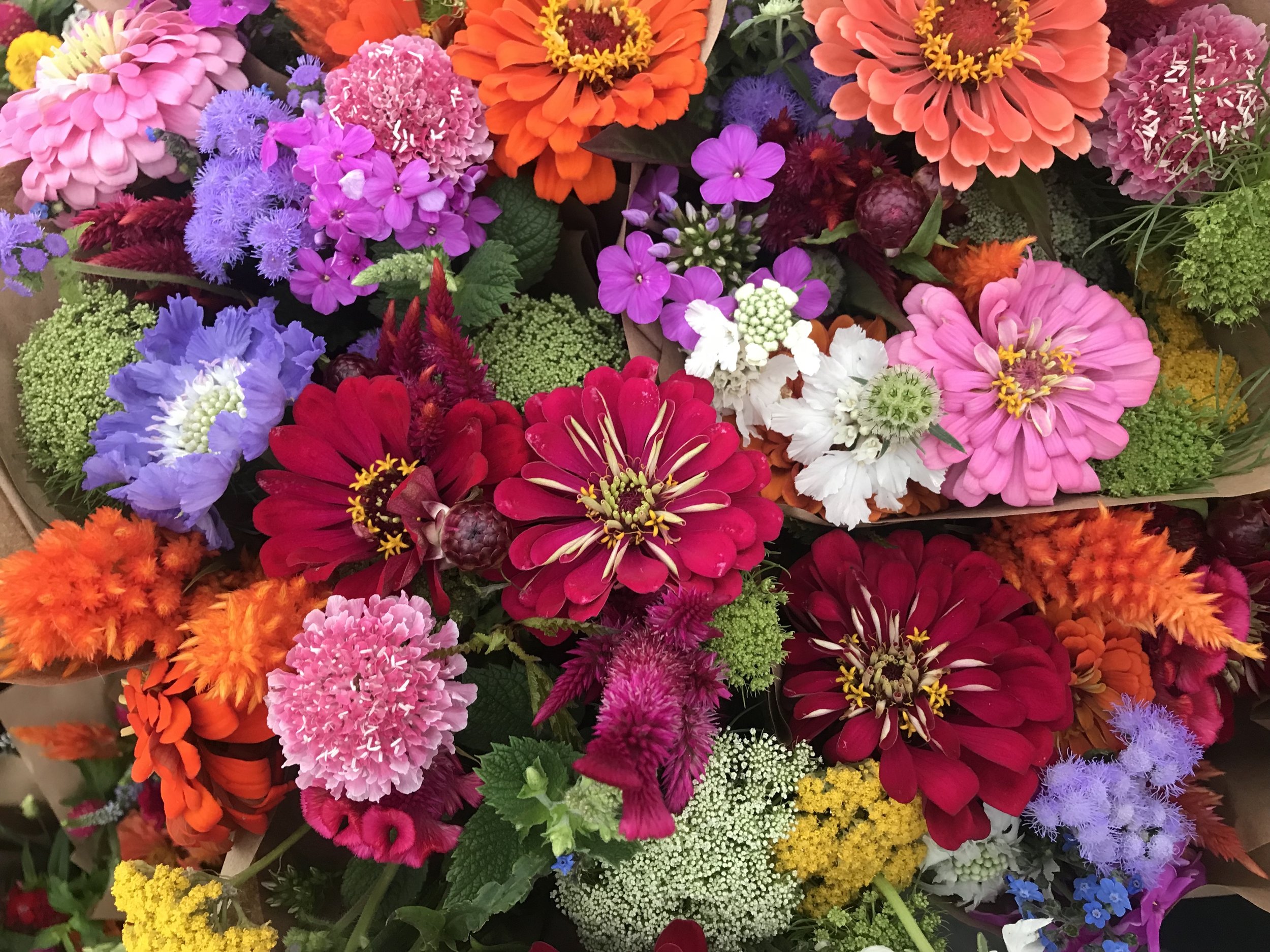
Forcing Blooming Flower Bulbs
Forcing vibrant spring blooms, including tulips, daffodils, and hyacinths, is a simple and rewarding project. This year's success involved intentional potting, minimal watering, and the necessary chilling period. Bulbs, potted in clay pots with pea gravel for drainage and adorned with Spanish moss, thrived with regular but light watering. Replicating this process for tulips, including a fringed mix, brought delightful results, making it an ideal project for both seasoned gardeners and first-timers, offering a burst of color and joy.
What’s Better Than Spring Blooms?
Gorgeous, scented, vibrant, cheery spring blooms from bulbs. You know who they are! Tulips, daffodils, hyacinth, grape hyacinth. All the pretties! Could there be anything better? The have wonderful fragrance and when cut in a mixed bouquet, look like something from a Dutch still life painting…swoon.
For the last two years, we’ve experimented with forcing spring blooming bulbs. I’ll be totally honest, last year was a total flop. It was a good try, but I didn’t do it right. I brought in bulbs early spring, plopped them into pots and watered away. They did sprout, but they didn’t perform like I needed them to and ended up totally failing. What a bummer! Well, this year, I learned the correct way to do this and now have loads of forced blooms to share with my friends, family and customers. I’m totally excited to add some cheer into people’s lives, especially right now with all of the isolation and social distancing happening. They’re a sure way to add some cheer.
Gorgeous rustic terra-cotta pots with forced hyacinth.
Crating: this year, instead of pulling bulbs out at the last moment, I intentionally potted them up in crates when they arrived in early November. I added a layer of dirt (about 5 inches deep) and gently pressed the bulbs into the dirt, leaving the top of the bulb exposed—I didn’t cover with dirt.
Watering: bulbs actually take a minimal amount of water. I maybe watered lightly every month. If the bulbs become too wet, they will rot. I did have a few hyacinth bulbs that ended up rotting. I took them out as soon as I saw it and tossed them in the compost pile.
Temperature: bulbs must be kept cold until you’re ready to allow them to bloom out. We kept out bulbs in our minimally heated shop space, near the front door (for extra cold). The space was kept around 40 degrees all winter long and this was enough to give the bulbs the ‘chill’ period they need in order to be force. They have to be kept at this temperature for at least 12-16 weeks. Our were actually in the chill stage from November through March, so much longer than needed; however, if I had wanted to pull them out earlier, I could have done that.
Potting: bulbs were placed in a deep clay pot. I placed about an inch and a half of pea gravel in the bottom, because the pots I used didn’t have holes in the bottom. This gives the water a resting place without the roots becoming too water logged. On top of the pea gravel, I placed about two inches of dirt, then added the bulb, roots down, into the dirt, filling in dirt around the remainder of the bulb. Water them in, lightly. On the top, I placed Spanish moss (shown above) and a tag from the farm. Voila!
Care Advice: water once a week, but not heavily. These bulbs don’t need a ton of water to produce their gorgeous blooms and we want to make sure that the roots don’t sit in water.
I also copied this same process for tulips, daffodils and grape hyacinth. Since the tulips are smaller, I added four bulbs into a shallow pot, again putting pea gravel at the bottom for drainage, and added a bit of pea gravel and Spanish moss on top. The tulips are pretty special, because they’re a fringed mix, which everyone absolutely goes gaga for. They’re just gorgeous!
If you’ve never tried to force bulbs before, I highly suggest it, even if you have failed in the past, like me. It was fun and encouraging to give it another go, seeing success this round. If you’re a first time gardener, you should also try this at home. It’s a simple process and you can find any of these bulbs at your local nurseries, and/or hardware stores in the fall.
Get Growing!
XX Jenn
Our Green Winter Oasis
In our propagation house, despite frozen grounds, we nurture vibrant dahlias, cold-tolerant seeds, and new varieties like sapponaria and love grass. The fluctuating temperature challenges patience, but the anticipation of a blossoming season keeps us excited. Stay tuned for the floral wonders! 🌱🌸 #SpringPrep #FlowerFarm
The ground may be frozen and covered with snow, but inside our propagation house, it’s filled with lush, verdant plants. It’s our oasis while we wait for the spring to really start going. Can you imagine the warm, moisture rich, plant smell as you walk into this place? It’s the stuff dreams are made of!
What do we have growing right now, you ask? So much! Admittedly, we kept some of our dahlias from going into hibernation. We grabbed 10 tubers (or more) from each variety we wanted to build more stock from, potted them up and started the process as of November 1st. We’ve been taking cuttings all winter! Shown below is just a few of the cuttings that we have in the prop house. We have so many now, we had to send some to an overflow space. Just awesome!
If you’re curious about what I’m talking about, or how to do this, check out our YouTube video for more information: Taking Dahlia Cuttings
We also have tons of seeds started, but mostly seeds that can take a bit of cold. Flowers like snapdragons, statice, strawflower, and agrostemma are great for this. They don’t mind getting a little chilled, as long as there’s not direct frost hitting them. They’re perfect for early season, because we can stash them in our unheated greenhouses.
Some of the new seeds we’re trying this year are these hollyhocks. I’m in love with their pretty little frills and the colors are gorgeous. We’re planning on adding these by the Flower Cottage to add a cottage garden effect. I can’t wait to see how they turn out.
Another new variety of flower we’re growing this year is sapponaria. This dainty annual will add a little extra sparkle to bouquets we sell this year. I just love the airiness and pretty color it’ll add. From all indications, it’s going to be a smashing success, but you’ll have to tell us what you think!
Our friends, the Hong-Elder Boys, prompted us to try out love grass this year. We sowed the seeds and it’s starting to come up! It seems to be pretty slow growing at the moment, but I’m hoping to give it plenty of time to grow before putting in the ground.
Below is a picture of the seed starts in the prop house. We observed that seeds germinate a little more sporadically, because the temperature in there isn’t regulated as easily and can generally has a pretty wild fluctuation of temperature…anywhere between 65-85 degrees. The seedlings prefer to be around 70 degrees or so for best germination. However, I just visited the prop house again tonight and saw many, many new little seedlings popping up. I have to keep reminding myself to practice patience, which really isn’t be strong suit.
We’ve been starting seeds day and night and it’ll be this way until the end of June. It’s officially growing season time for our flower farm! I can hardly wait to have flowers again to bring into the house, share with friends, and to work with for floral design. Although it’s only been a few short months, it feels like forever ago that we had flowers.
Happy growing, our friends and feel free to let us know what special things you might be growing this year. We’ve already found so much inspiration in what people have shared with us already! Thank you so much for sharing your thoughts and for following along with us.
Jenn XX
Rainy Day Weather. What Does a Flower Farmer Do?
Rainy days have slowed down field work, but they offer guilt-free time for business activities. Planning additions to the event space, Adam's construction skills come into play, while I focus on sourcing house plants, practicing floral design, seeding for the next flower planting, and managing various farm services. The rainy respite turns into a productive day for PepperHarrow! ☔💼 #FarmLife #BusinessPlanning
This early flower season has been incredibly rainy. It’s been tough to get out to the fields to plant, weed, and for the flowers to grow. In my most recent field check, I saw standing water in one of the dahlia fields and the corn cockle plants are melting into the ground. Boo! Please pray for some sunshine for the next few days. This rain is definitely rough!
However, the one good thing about the rain…it sure gives us lots of extra time to work on other business activities and it feels pretty guilt free. When it’s sunny and amazing out, it’s hard to sit down and do some of these tasks, but when it’s raining, it’s like a mental bluebird.
So, what are some of the business things we do when it’s raining outside? Well, today we’ve been planning out adding some additional elements to our event space. Adam’s the construction king, so he gets the honors of working with the workers who will make it happen and he also does all of the ordering for the parts and supplies we need.
I’ve been working on sourcing amazing house plants to have for the flower cottage, practicing floral design for fun (and pics), seeding more seeds for our second succession of flower planting, working on bridal and other event floral quotes, adding pages to Squarespace for additional services we’re offering on the farm, and working on scheduling some social media posts for the next few weeks. I could go on and on. It feels absolutely amazing!
Incredible Allium
Allium, a low-maintenance garden gem, often goes unnoticed. Its whimsical, lollipop-like blooms bring unique charm to the garden. At PepperHarrow, we use allium in spring bouquets and transform them into enchanting 'fairy wands' as they dry. Discover the versatile beauty of this overlooked flower! 🌸🍭 #GardenGems #AlliumBlooms
Allium often gets overlooked and doesn’t get the recognition or praise that it should in the garden. It’s a flower that people typically plant into their gardens and tend to forget, because it’s so low maintenance. Allium is one of those wonderful bulbs that you can plant into the ground and just walk away from. Can anything be better?!
Their perfectly formed little balls on top of their stem give them a whimsical and lollipop look. Shown below, the contrast of the purple of the allium with ninebark is unusual and stunning. The perfect contrast for true garden design.
Here at PepperHarrow, we use allium for all kinds of things. In the spring, we use them in bouquets for market, weddings, and sell them as single stem flowers (artists love them!). Towards late spring, they dry on the stem and transition into lovely ‘fairy wands’ as Adam calls them. Once dried, they can be hung upside down and stored for fall/winter use in wreaths, or also spray painted in all sorts of gorgeous colors to make an interesting dried bouquet of colorful flowers.
Special Flower Additions for 2019
We just returned from an inspiring trip with fellow flower enthusiasts! We held an Instagram live session answering questions about our new flowers for this year. Lavender, unique pansies, smilax vines, bush clematis, and pimpinella (Greater Burnet Saxifrage) are joining our lineup. Each brings its own charm to our farm, promising diverse and stunning bouquets. Experimenting with new varieties is a yearly delight, ensuring we offer the best blooms. What flowers are you excited about this year?
Adam and I just got back from a needed trip away from the farm and met up with our dearest flower friends.. It was an incredible weekend of full of collaboration, best practice sharing, and lots of time was spent geeking out with other flower lovers over new plant varieties we’re growing this year. It’s funny to me that others obsess over flowers like I do, but I guess it’s not all that surprising. #plantaddictsunite
As a part of our meet-up, we held an Instagram live feed with ‘ask the flower farmer anything’. It was great to hear some of the thoughtful questions fellow plant enthusiasts have out there and I was thrilled to have an opportunity to respond to them. One of the questions that stuck with me in particular was a question about the new/special flowers that are being added to the flower farm this year. I told you that I ‘geek out’ and get excited about flowers, so I wanted to take an opportunity to address this in more detail and share some of the new things we’re trying this year.
Lavender
I’m not sure I need to write anything more about this flower. It’s just one of the loveliest, most fragrant flowers ever! The smell of these lovely plants is enough for me, but the added bonus of their gorgeous blooms just sends me over the edge. Can you imagine what a mass-planting of thousands of lavender plants is going to look like at maturity?
Pansies
These are not your momma’s pansies! We’re growing a variety specifically for cut flower cultivation, so the stems are long enough to go into a bouquet. These adorable blooms are going to grace early spring bouquets we will be selling on the farm and at farmer’s market. If all goes well, we’ll add them to the line-up and will continue to provide them in spring bouquets. Why spring only? Pansies are a cool weather loving flower, so as soon as the heat sets in, they fizzle out a bit.
Smilax
Such a crazy name for a pretty simple vine. This is one of the vines that florists use for weddings. It hold up pretty well out of water and looks absolutely gorgeous. I’ll admit, I’m a little intimidated by this one (starting from seed), because many other flower farmers told me the seedlings are pretty moody. Say a little prayer for me, that I can keep them alive. I’d love to have this available to share locally with other event florists and designers.
Bush Clematis
Where do I start with clematis? Oh.my.gosh. It’s so delicate and beautiful and floral design work. There are little things that differentiate a design and this is one of them. I sourced plugs in on this one instead of starting from seed, because they take a lot of time to grow. I’ll be trellising them, allowing them some support for their 5’ max height. They grow as a bush, so the plant will also have itself for a bit of support as it grows. Be on the lookout for pictures of this one, because I’m pretty sure it’ll be one of the first things I cut!
Pimpinella
Okay, so maybe not the best name ever, but trust me, GOOGLE it! Admittedly, I just had to go grab the seed packet, because I couldn’t remember its other name. It’s also know as: Greater Burnet Saxifrage. This looks like it’s related to one of my favorite filler flowers, Ammi. I’m growing ‘Rosea’, which I soured from Select Seeds and I can’t wait to use them to add a little airiness to my bouquets. It’s going to add that perfect touch of that wildflower look everyone is craving.
Every year we add a few things that are different and interesting. It’s fun to experiment to see what does well, or what doesn’t. We always grow more of the things that thrive and are easy to grow on our flower farm. For those things that don’t, we don’t ever keep them in the line up for the following year. As they say, variety is the spice of life, right?!
What are you growing this year that you’re excited about? Anything different and exciting, or maybe just something new to you that you haven’t grown before? Leave your comments below. We love flowers and can’t wait to hear from you!
-Jenn














